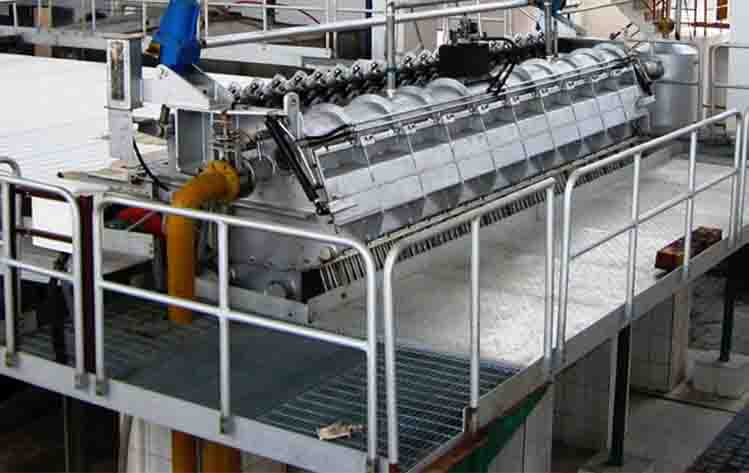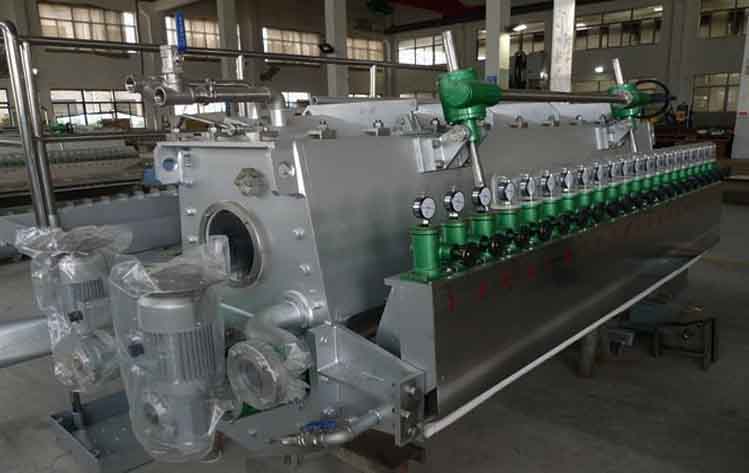Headbox
Headbox is known as the “heart” of the paper making machine, is a key part of the paper making machine. It is a hub connecting the two parts of “flowing” and “forming”, and is one of the fastest growing parts on the paper making machine. The function of the headbox in paper making is to send the required pulp to the forming screen according to the requirements of the forming part of the paper making machine, providing necessary prerequisites for good forming of the paper web.
Function and performance of headbox
As the combination part of “flowing” and “forming” of the paper making machine, the basic function of the headbox is to provide good prerequisites for paper formation, that is, to distribute the paper evenly along the width of the paper making machine to ensure uniform pressure distribution, speed uniformity, flowing uniformity, concentration uniformity, and controllability and uniformity of fiber orientation; to effectively disperse pulp fibers, prevent fiber flocculation and provide and maintain stable sizing head and pulp speed ratio according to process requirements.
In the long-term development of pulp and paper technology, although various structural forms of headboxes have appeared, their main functions remain the same basically, that is, cloth distribution, homogenization and spraying. The basic functions of the headboxes are expressed in five aspects specifically:
- Provide a uniform and stable blown pulp flow to the entire width of the paper making machine, avoiding lateral pulp flow and having no directional transverse flow or longitudinal flow.
- Provide a stable lip with a satisfactory geometric size, which is not affected by temperature, pressure and lip opening.
- Form a fiber suspension with minimum flocculation and good dispersion.
- Provide the controls of the quantitative distribution of the web, the pulp falling point, the pulp blowing angle and speed that can meet the process requirements.
- Provide convenient measures to keep the headbox clean and easy to operate and maintain.
A good headbox must have the following proformances:
- It can produce a uniform and stable paper web with no quantitative longitudinal flow on the paper web.
- The lip area of the headbox should not be affected by pressure, temperature and opening to ensure uniform distribution.
- The phenomenon of pulp hanging and pulp attachment should be avoided in the headbox.
- It is easy to keep it clean.
- It can Control pulp-screen speed ratio.
Therefore, the headbox must:
- Be evenly distributed in the direction of the paper making machine.
- The blown pulp has a uniform velocity profile, concentration profile and turbulence profile.


Structure
In general, the function of the headbox is to blow the uniform pulp flow on the screen of the paper making machine at a certain angle along the width direction to under uniform pressure, speed and flow required by the paper making process and the internal fibers as much as possible. At the same time, the width of the paper making machine and the fine adjustment of moisture are provided to ensure that the required quality paper.
In fact, the any type of headbox is specifically carried out and coordinated by the three main parts of the pulp distributor, rectifier and material charging device. The functions of these three parts are:
Pulp distributor: According to the principle of fluid dynamics, it can use a regular variable cross-section, the paper flow is uniformly distributed along the width direction of the paper making machine at a certain pressure, speed and flow rate.
Rectifier: It can use the rectifier and turbulence generator to generate turbulence with appropriate size and strength, effectively disperse the fibers, prevent the flocculation of the fibers, and maintain the non-directional arrangement of the fibers as much as possible, so that the fibers in the paper flow are in a uniformly dispersed state.
Material charging device: It can make the paper material are blown uniformly at a certain angle and speed to the predetermined screen points, and provide the quantitative of the width of the paper making machine, make fine adjustment of moisture content, the turbulence of pulp flow, and the scale of flocculation control to ensure that we can get the paper with the required quality.
As a leading paper making equipment manufacturer, AGICO can provide you with high quality paper making machine and relevant information about headbox in details.

